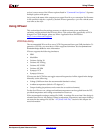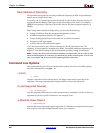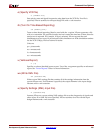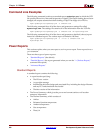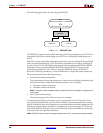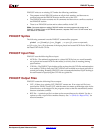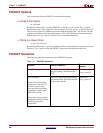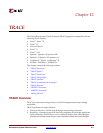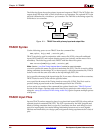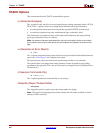
Development System Reference Guide www.xilinx.com 207
PIN2UCF Syntax
R
PIN2UCF writes to an existing UCF under the following conditions:
• The contents in the PINLOCK section are all pin lock matches, and there are no
conflicts between the PINLOCK section and the rest of the UCF.
• The PINLOCK section contents are all comments and there are no conflicts outside of
the PINLOCK section.
• There is no PINLOCK section and no other conflicts in the UCF.
Note:
Comments inside an existing PINLOCK section are never preserved by a new run of
PIN2UCF. If PIN2UCF finds a CSTTRANS comment, it equates “INST name” to “NET name” and
then checks for comments.
PIN2UCF Syntax
The following command runs the PIN2UCF command line program:
pin2ucf
{ncd_file.ncd|pin_freeze_file.gyd} [–r report_file_name -o output.ucf]
ncd_file or pin_freeze_file is the name of the input placed and routed NCD file for FPGAs, or
the fitted GYD file for CPLDs.
PIN2UCF Input Files
PIN2UCF uses the following files as input:
• NCD file—The minimal requirement is a placed NCD file, but you would normally
use a placed and routed NCD file that meets (or is fairly close to meeting) timing
specifications.
• GYD file—The PIN2UCF pin-locking utility replaces the old GYD file mechanism that
was used by CPLDs to lock pins. The GYD file is still available as an input guide file to
control pin-locking. Running PIN2UCF is the recommended method of pin-locking to
be used instead of specifying the GYD file as a guide file.
PIN2UCF Output Files
PIN2UCF creates the following files as output:
• UCF—If there is no existing UCF, PIN2UCF creates one. If an output.ucf file is not
specified for PIN2UCF and a UCF with the same root name as the design exists in the
same directory as the design file, the program writes to that file automatically unless
there are constraint conflicts.
• RPT file— A pinlock.rpt file is written to the current directory by default. Use the –r
option to write a report file to another directory. See “–r (Write to a Report File)” for
more information.



